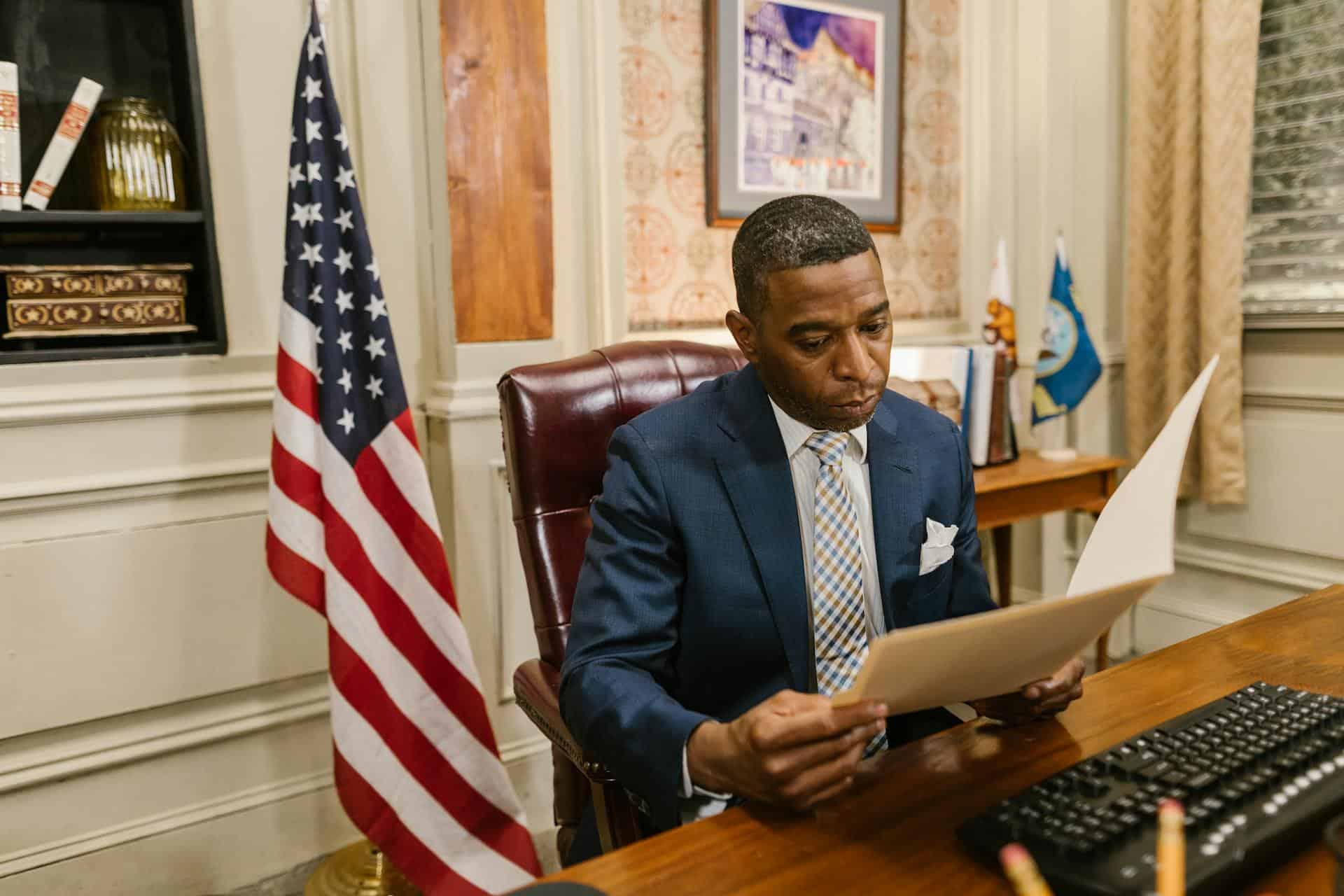Congress’s Push Against Remote Work Misfires

In recent years, the debate over remote work has intensified, particularly within the federal government. With more than a year of pressure from Congress to decrease telework among federal employees, the release of the latest Office of Management and Budget (OMB) report provides critical insights that challenge this pressure. The OMB report shows that, contrary to Congressional concerns, federal agencies are exceeding the administration’s 50% in-the-office goal for telework-eligible employees. In fact, government-wide, roughly 61% of the work hours that telework-eligible federal employees perform have been in person. This data indicates that the current push to reduce telework is unwarranted and potentially counterproductive.
Video: “Congress’s Push Against Remote Work Misfires”
Podcast: “Congress’s Push Against Remote Work Misfires”
The Reality of Federal Telework Statistics
The recent OMB report underscores that the majority of federal employees are already meeting or exceeding in-office expectations. Of the 2.2 million federal employees, about 54% work fully in person due to job requirements, while 46% are eligible for telework. Among those eligible for telework, only about 10% work fully remotely. These figures suggest that telework is not as pervasive as some lawmakers may have feared, and that agencies are effectively balancing in-person and remote work.
According to the OMB report, agencies such as the Departments of Agriculture and State have approximately 80% of their telework-eligible employees working in person. Conversely, other agencies like the Departments of Treasury, Education, and Housing and Urban Development report less than 40% of in-person work hours for telework-eligible employees. This variability reflects the diverse operational needs and missions of federal agencies, which require different levels of in-person presence. It’s a testament to the flexibility and adaptability of federal work environments to meet diverse operational needs. The OMB’s findings highlight that federal agencies are strategically aligning their work environments with mission-specific requirements rather than a one-size-fits-all approach. This alignment allows agencies to optimize performance and effectiveness, ensuring that telework does not hinder mission-critical operations.
Moreover, the OMB report indicates that government-wide, approximately 61% of work hours performed by telework-eligible employees were in person during two pay periods in May 2024. This level of in-person work exceeds the administration’s goal and aligns with trends observed in the private sector. According to a recent Congressional Budget Office (CBO) report, telework rates in the federal workforce are generally in line with those in the private sector, which further dispels the notion that federal employees are overly reliant on telework.
Namely, contrary to the prevailing belief among members of Congress critical of remote work, the report revealed that by the end of 2022, only 22 percent of federal employees typically worked from home, compared to 25 percent of private-sector employees. In a recent hearing with the House Oversight and Accountability Committee, the surprising revelation that federal workers telework less than their private-sector counterparts left many lawmakers baffled. One of the most notable moments during the hearing came when Rep. Glenn Grothman (R-Wisc.) expressed disbelief at the data. “Did you say that federal employees got back to work quicker than in the private sector?” he asked incredulously.
The Unfounded Congressional Pressure Against Remote Work
Despite these findings, Congress has continued to apply pressure on the White House to curtail telework in the federal workforce. This pressure is rooted in concerns about productivity, accountability, and the utilization of federal office spaces. Lawmakers have argued that telework may lead to decreased employee performance and inefficient use of government real estate.
However, the OMB report challenges these assumptions by providing evidence that telework has not compromised productivity or performance. In fact, many agencies have reported improvements in employee engagement and job satisfaction, which are critical factors in workforce performance and retention. Additionally, the report highlights that agencies have made significant efforts to optimize office space utilization, reducing costs and improving the efficiency of federal real estate portfolios.
Telework offers numerous benefits that contribute to a more resilient and effective federal workforce. For instance, telework enhances employee satisfaction by providing flexibility, which can lead to higher retention rates and lower turnover . This flexibility is particularly important for attracting and retaining top talent in a competitive job market. Furthermore, telework can reduce commuting times, leading to better work-life balance and increased productivity. By leveraging telework as a strategic tool, federal agencies can maintain high levels of performance while meeting the evolving needs of their employees and missions.
The OMB report underscores the need for a nuanced approach to telework policies that reflect the diverse missions and operational needs of federal agencies. Rather than imposing blanket restrictions on telework, policymakers should focus on empowering agencies to tailor their work environments to achieve optimal outcomes.
To further enhance the effectiveness of telework, federal agencies should continue to invest in technology and infrastructure that support remote work capabilities. By providing employees with the tools and resources they need to succeed in a hybrid work environment, agencies can ensure that telework remains a viable and productive option.
Additionally, agencies should prioritize ongoing evaluation and adjustment of telework policies to align with emerging best practices and workforce trends. This continuous improvement process will enable federal agencies to remain competitive in attracting and retaining talent while delivering results for the American people.
Conclusion: Don’t Fight Against Remote Work
The latest OMB report clearly demonstrates that the pressure from Congress to decrease telework in the federal government is unwarranted. Agencies are not only meeting but exceeding the administration’s goals for in-person work, while also leveraging telework to enhance employee engagement and performance. The report highlights the importance of maintaining a balanced approach that allows for flexibility and adaptability in the federal workforce.
Rather than curbing telework, policymakers should focus on supporting agencies in optimizing their work environments to meet mission-critical needs. By embracing telework as a strategic asset, the federal government can build a more resilient, efficient, and effective workforce that is well-equipped to serve the American people in the years to come.
Key Take-Away
The pressure against remote work in the federal government is unwarranted. The OMB report shows federal agencies are exceeding in-office expectations, balancing telework with mission needs. Share on XImage credit: RDNE Stock project/pexels
Dr. Gleb Tsipursky was lauded as “Office Whisperer” and “Hybrid Expert” by The New York Times for helping leaders use hybrid work to improve retention and productivity while cutting costs. He serves as the CEO of the boutique future-of-work consultancy Disaster Avoidance Experts. Dr. Gleb wrote the first book on returning to the office and leading hybrid teams after the pandemic, his best-seller Returning to the Office and Leading Hybrid and Remote Teams: A Manual on Benchmarking to Best Practices for Competitive Advantage (Intentional Insights, 2021). He authored seven books in total, and is best know for his global bestseller, Never Go With Your Gut: How Pioneering Leaders Make the Best Decisions and Avoid Business Disasters (Career Press, 2019). His cutting-edge thought leadership was featured in over 650 articles and 550 interviews in Harvard Business Review, Forbes, Inc. Magazine, USA Today, CBS News, Fox News, Time, Business Insider, Fortune, and elsewhere. His writing was translated into Chinese, Korean, German, Russian, Polish, Spanish, French, and other languages. His expertise comes from over 20 years of consulting, coaching, and speaking and training for Fortune 500 companies from Aflac to Xerox. It also comes from over 15 years in academia as a behavioral scientist, with 8 years as a lecturer at UNC-Chapel Hill and 7 years as a professor at Ohio State. A proud Ukrainian American, Dr. Gleb lives in Columbus, Ohio. In his free time, he makes sure to spend abundant quality time with his wife to avoid his personal life turning into a disaster. Contact him at Gleb[at]DisasterAvoidanceExperts[dot]com, follow him on LinkedIn @dr-gleb-tsipursky, Twitter @gleb_tsipursky, Instagram @dr_gleb_tsipursky, Facebook @DrGlebTsipursky, Medium @dr_gleb_tsipursky, YouTube, and RSS, and get a free copy of the Assessment on Dangerous Judgment Errors in the Workplace by signing up for the free Wise Decision Maker Course at https://disasteravoidanceexperts.com/newsletter/.

